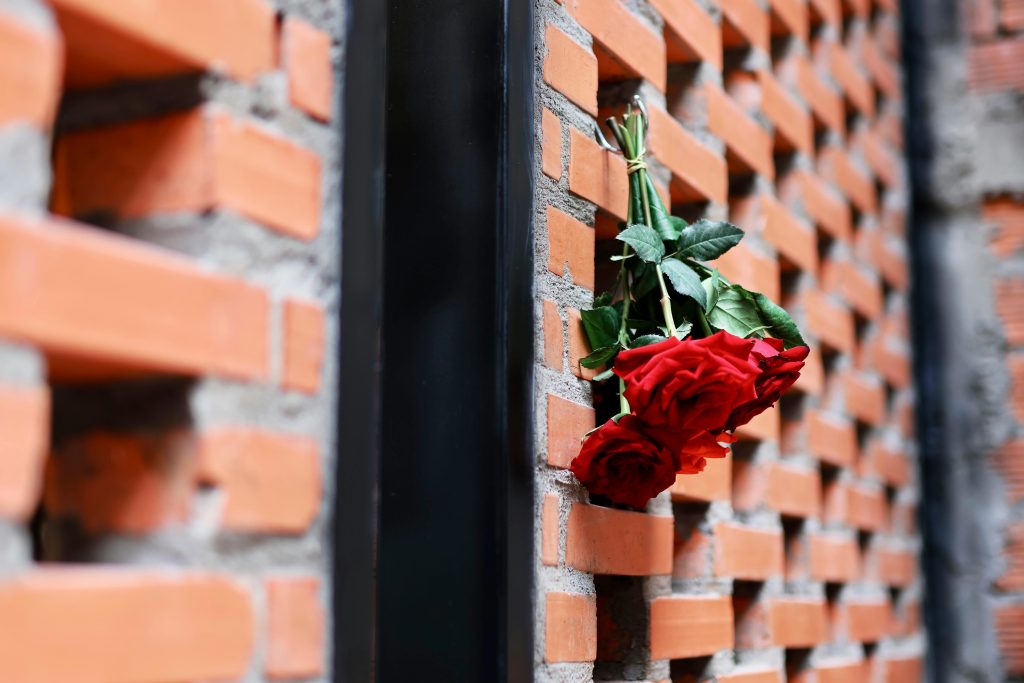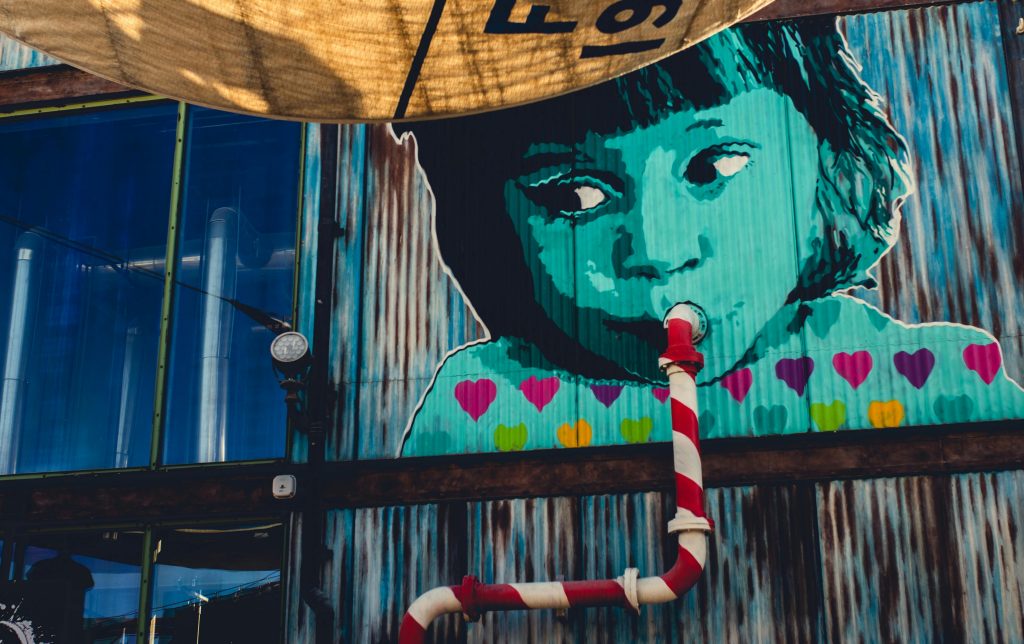
First, a few announcements.
Konstantinos FaHs has another article published following up on his Synchronized Chaos pieces about ancient Greek myths and their continuing role in modern Hellenic culture. He’d like to share his piece in The Rhythm of Vietnam, which is a Vietnamese magazine with a mission that seems similar to our own.
Also, disabled contributor, lyric essayist, and ALS activist Katrina Byrd suffered hurricane damage to her home and seeks support to rebuild and make ends meet while she’s getting ready to move. Whatever folks can contribute will make a real difference.
Now, for our new issue: Chaos Does Not Exclude Love. The reverse of a phrase from a review of Elwin Cotman’s urban fantasy collection discussing how Cotman’s work was from a loving place yet made room for the complexity of the world. At Synchronized Chaos, we are intimately acquainted with the world’s nuance and chaos, yet we see and find room for empathy and connection.
Neven Duzevic reflects on travel memories and reconnecting with an old friend. Dr. Perwaiz Shaharyar speaks to the awesome and transformative power of romantic love. Dr. Prasanna Kumar Dalai reflects upon the intensity of romantic feelings. Duane Vorhees speaks to loneliness and heartbreak and sensuality and various forms of human-ness. Kristy Raines speaks to the beauty of love and the tragedy of heartbreak.

Harper Chan reflects on his bravado and the reality of his feelings in the past year. Mickey Corrigan’s poetry shows how psychological and cultural shifts and traumas can manifest in our bodies. Abigail George speaks to how support from friends and family and a commitment to live in the present rather than reliving old traumas can help those addicted to drugs. Alan Catlin mixes cultural memories and touchstones with personal and societal losses.
Vo Thi Nhu Mai offers up a poetic tribute to the international vision of fellow poet Eva Petropoulou Lianou. Greek poet Eva Petropoulou Lianou interviews Bangladeshi poet S. Afrose on how she hopes poetry and joint exploration through literary sci-fi will obliterate the need for war. Dr. Jernail Singh laments that morality and compassion have become passe to a generation obsessed with modernity and personal success. Priyanka Neogi speaks to the beauty of carrying oneself with noble character. Maria Koulovou Roumelioti urges us to remember the world’s children and create love and peace as Anwar Rahim reminds us to live with kindness and courage.
Mykyta Ryzhykh speculates on whether love can continue to exist amidst war. Haroon Rashid pays tribute to Indian political leader Dr. A.P.J. Abdul Kalam, who loved peace but led through strength. Christine Poythress reflects on how easy it is for a once-proud and free nation to slide into fascism simply by admiring the fascist aesthetic and its seductive power. Ahmed Miqdad renders a global tragedy in simple terms: he’s too scared to go back to his home in Gaza to water his cactus plant.
Lili Lang probes the meaning behind things that seem simple: the work of a hairdresser, a family packing up the belongings of a recently deceased grandmother.

Mahmudova Sohibaxon offers up a tribute to dependable and caring fathers. J.J. Campbell writes of the visceral love and physical work of aging and caregiving, of inhabiting an elderly and a middle-aged body. Taylor Dibbert’s poetic speaker embraces age with joy, thrilled to still be alive. Bill Tope crafts an expansive and welcoming vision of perfection that can welcome more types of people and bodies as Ambrose George urges the world to maintain an open mind towards gender roles and identities.
Leslie Lisbona pays tribute to her deceased mother by writing a letter catching her up on family news. Stephen Jarrell Williams considers endings and beginnings and the possibility of renewal. Asma’u Sulaiman speaks to being lost and then found in life. Cheng Yong’s poetry addresses ways we hide from each other and ourselves, physically and psychologically. Mahbub Alam wishes for a romantic connection that can extend and endure beyond Earth. Dibyangana’s poetry touches on love, grief, and personal metamorphosis. Mely Ratkovic writes of spiritual contemplation and the nature of good and evil. Lilian Dipasupil Kunimasa describes souls who turn away from greed and evil and heal, in smaller and larger ways. Christopher Bernard suggests that creativity and storytelling might play a part in what makes life worth enduring.
Brian Barbeito speculates about intention and communication with the universe. Svetlana Rostova speculates on what spirituality might mean in the face of a seemingly indifferent world. Shamsiya Khudoynazarova Turumnova’s piece conveys spiritual ecstasy, love, and beauty.
Sandro Piedrahita’s story highlights the power of enduring and sacrificial spiritual devotion in the midst of our human-ness.
Chimezie Ihekuna engages with the talents, creativity, and limitations of being human. Dr. Jernail Anand looks at human creativity and at AI and draws a comparison, encouraging humans to continue to create. Jasmina Rashidova explores what motivates people in the workplace. Eva Petropoulou Lianou interviews Turkish poet Bahar Buke about fostering imagination and connection through her work.

Paul Durand reflects on teaching first-grade music in a time of hatred and divisiveness. Su Yun collects the thoughts and observations of a whole selection of schoolchildren in China about nature and their world.
David Sapp reflects on how he wishes to always appreciate the egrets and lilies, sailing off into nature amid the various bird voices of the wild world. Mesfakus Salahin rhapsodizes about flowers and giddy spring romance. Soumen Roy celebrates the simple joy of butterflies and tea. Sayani Mukherjee speaks of an enduring oak tree in summer. Poetry from Eva Petropoulou Lianou, translated to Italian by Maria Miraglia and Arabic by Ahmed Farooq Baidoon, celebrates life lessons from nature. Liang Zhiwei reminds us of the power and vastness of nature, before and after the era of humanity. Nuraini Mohammed Usman sends up a sepia photograph of a tire hidden by a leafing young tree.
Jibril Mohammed Usman shares a photograph of a person looking into nature, at one with and part of his world, altered in the same way as the trees and house. Mark Young’s geographies play with and explore Australia from new angles, turning maps into works of art.
Jerome Berglund and Christina Chin stitch ideas and images together like clotted cream in their joint haikus. Patrick Sweeney’s two-line couplets explore a thought which ends in an unexpected way.

Odina Bahodirova argues for the relevance of philology as an academic discipline because of its role in preserving cultural wisdom encoded in language and the ability of students to understand and think critically about language. Sevinch Shukurova explores the role of code-switching as a pedagogical tool in language learning. Surayo Nosirova shares the power of an educator giving a struggling student tutoring and a second chance. Nozima Zioydilloyeva celebrates Uzbekistan’s cultural accomplishments and women’s education within her home country. Marjona Mardonova honors the history of the learned Jadid Uzbek modernizers.
Nazeem Aziz recollects Bangladeshi history and celebrates their fights for freedom and national identity. Poet Hua Ai speaks to people’s basic longings to live, to be seen and heard. Leif Ingram-Bunn speaks to hypocrisy and self-righteousness on behalf of those who would silence him, and self-assertion on his part as a wounded but brave, worthy child of God.
Z.I. Mahmud traces the mythic and the heroic from Tolkien to Harry Potter. Poet Hua Ai, interviewed by editor Cristina Deptula, also wonders about the stories we tell ourselves. She speculates through her work about what in the human condition is mandatory for survival and what is learned behavior that could be unlearned with changing times.
Synchronized Chaos contains many of the stories we tell ourselves about ourselves and our world. We hope you enjoy and learn from the narrative!
